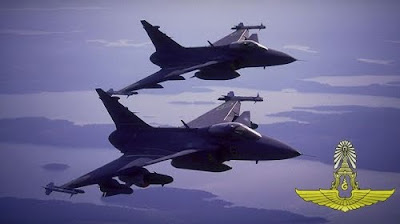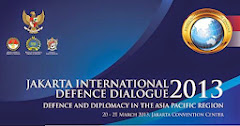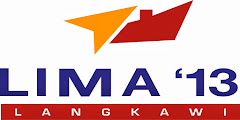26 Januari 2010 PT-91M MBT di Malaysia disebut dengan Pendekar (photo : Cari)
PT-91M MBT di Malaysia disebut dengan Pendekar (photo : Cari)
PEMBELIAN 48 buah kereta kebal utama (MBT) PT-91M berserta sembilan kenderaan sokongan lain dari Poland pada 2003 telah mengubah landskap pertahanan negara khususnya bagi tentera darat.
Perolehan aset tersebut turut memberi penggandaan kuasa dan meningkatkan kuasa tembak yang belum pernah dirasai oleh Kor Armor Diraja sebelum ini.
Kereta kebal itu seterusnya dinamakan Pendekar, sesuai dengan peranannya sebagai mata dan hujung tombak ketumbukan tentera darat sama ada ketika melakukan operasi ofensif mahu pun semasa bertahan.
Penggandaan kuasa itu lahir kerana Pendekar mempunyai kemampuan mobiliti, kuasa tembak dan perlindungan armor yang sesuai dengan persekitaran muka bumi negara.
Paling menggerunkan, kuasa tembak daripada meriam Smoothbore 2A46MS berkaliber 125 milimeter buatan Slovakia dengan peningkatan ketepatan tembakan sehingga 23 peratus berbanding meriam asal. Ia mampu memusnahkan semua jenis kereta kebal yang ada di dunia pada hari ini sehingga jarak lima kilometer.
Kemampuan itu sudah pasti menjadi igauan ngeri kepada pihak yang berniat untuk mengganggu-gugat kedaulatan negara. Apatah lagi, sistem kawalan tembakan PT-91M menggunakan teknologi Savan 15 FCS ciptaan Perancis yang turut dipakai oleh kereta kebal moden mereka, AMX-56 Leclerc.
Gabungan teknologi Slovakia dan Perancis itu membolehkan meriam utama Pendekar memuntahkan sehingga 10 tembakan seminit bagi semua jenis peluru sama ada APFSDS, HEAT dan HE tanpa sebarang masalah - tidak kira ketika sedang bergerak laju atau dalam keadaan pegun.
Kegagahan PT-91M bukan hanya terletak pada meriam utamanya tetapi turut disokong dengan sistem navigasi SIGMA 30 dan blok armor reaktif ERAWA-2 pada bahagian hadapan, bumbung dan sisi hadapan. Ia bertujuan mengurangkan impak hentaman daripada sistem peluru berpandu anti-armor dan juga perobek armor.
Bagi tujuan meningkatkan daya pengesanan terhadap ancaman peluru musuh pula, Pendekar dilengkapkan dengan sistem penderia pancaran laser dan ia diintegrasikan pula dengan sistem grened asap.
Sebelum perolehan PT-91M dibuat, tentera darat bergantung sepenuhnya pada kereta kebal ringan Scorpion yang dipasang dengan meriam Cockerill 90 milimeter dalam melatih dan merangka doktrin peperangan kereta kebal yang sesuai.
Walaupun digelar sebuah kereta kebal ringan, prestasi mobiliti, kuasa tembak dan perlindungan Scorpion jauh ketinggalan berbanding Pendekar PT-91M.
Kini semua Pendekar PT-91M sudah diterima oleh Rejimen 11, Kor Armor Diraja yang berpangkalan di Kem Syed Sirajuddin, Gemas, Negeri Sembilan.
Sejarah Pengoperasian Kereta Kebal
British dianggap sebagai negara pertama yang mencipta dan menggunakan kereta kebal iaitu pada Perang Dunia Pertama. Tetapi pada era tersebut, kereta kebal tidak mempunyai turet. Konsep turet buat pertama kali diperkenalkan oleh Perancis melalui kereta kebal jenis FT-17 pada tahun 1917.
Penggunaan kereta kebal pada masa itu hanya terhad bagi tujuan merempuh halangan seperti kawad berduri dan sistem perparitan bagi membuka jalan kepada pasukan infantri untuk menyerang dan menguasai pertahanan musuh.
Bagaimanapun, doktrin dan taktik penggunaan kereta kebal di medan tempur moden mula diperkenalkan oleh Jerman melalui taktik blitzkrieg (serangan kilat). Taktik ini menyaksikan Jerman mengoperasikan ketumbukan kereta kebal secara bersepadu dengan unit artileri dan infantri bagi membolosi sistem pertahanan musuh.
Taktik serangan itu ternyata berjaya menghalang bekalan logistik, memutus sistem komunikasi menyebabkan sistem arahan dan kawalan berada dalam keadaan kucar kacir.
Pada era pasca Perang Dunia Kedua dan perang dingin pula menyaksikan teknologi pembuatan kereta kebal, sistem persenjataan terus berkembang.
Ketika itu ia lebih tertumpu terhadap usaha mempertingkatkan sistem sedia ada termasuklah daripada segi penjanaan kuasa, jenis dan kaliber meriam utama serta pelbagai jenis penderia elektro-optik bagi membolehkan ia beroperasi siang dan malam.
Sementara itu, dalam konteks Malaysia, penggunaan kereta kebal di negara ini bermula pada 1957 ketika Jepun melancarkan kemaraan untuk menakluk Malaya. Ketika itu ramai pemikir ketenteraan berpendapat kereta kebal tidak sesuai diatur gerak di negara ini memandangkan keadaan tanah yang lembut.
Walaupun kurang mendapat liputan, pengoperasi kereta kebal di negara ini mempunyai signifikan tersendiri kerana setiap kemaraan tentera Jepun, didahului oleh unit kereta kebal mereka terlebih dahulu bagi mengasak pertahanan British.
PT-91M Evolusi T-72
 Malaysia Psudah menerima lengkap 48 PT-91M beserta 9 kendaraan pendukung (photo : Kolonel)
Malaysia Psudah menerima lengkap 48 PT-91M beserta 9 kendaraan pendukung (photo : Kolonel)
Sebenarnya pada peringkat awal perolehan Pendekar, ramai pemerhati ketenteraan termasuk bekas anggota Angkatan Tentera Malaysia (ATM) yang mempertikaikan keputusan kerajaan. Mereka menyifatkan PT-91M yang merupakan kesinambungan kereta kebal T-72 yang mudah 'diratah' oleh kereta kebal moden lain.
Pandangan-pandangan serong itu dibuat dengan mengambil contoh Perang Teluk 1991, Operasi Desert Storm serta Perang Chechen-Rusia yang menyaksikan ratusan kereta kebal T-72 menjadi mangsa tembakan daripada MBT seperti M1A1 Abrams dan Challenger 2 selain peluru anti kereta kebal dan RPG-7.
Namun, menggunakan persekitaran perang di Iraq dan Chechen bagi membandingkan kemampuan PT-91M dan T-72, ia adalah sesuatu yang tidak adil memandangkan persekitaran dan bentuk muka bumi negara berbeza dengan negara tersebut.
Di Iraq, Tentera Bersekutu yang diketuai Amerika Syarikat (AS) mudah meratah unit armor Saddam Hussien kerana mereka telah menguasai sepenuhnya ruang udara Iraq dan ditambah lagi dengan versi T-72 yang dikeluarkan secara berlesen dengan nama Asad Babil tidak secanggih T-72 asal.
Manakala di Chechen pula, kemusnahan yang menimpa unit armor Rusia adalah disebabkan kesilapan taktik ekoran sikap terlalu yakin sehingga komander Rusia mengarahkan serbuan dibuat di kawasan perbandaran tanpa perlindungan daripada unit udara.
Akibatnya berpuluh-puluh kereta kebal dan perisai Rusia musnah dalam masa sehari selepas diserang hendap oleh pejuang Chechen dengan menggunakan senjata utama RPG-7.
Bagaimanapun bagi tentera darat, perolehan kereta kebal dibuat setelah kajian teliti dilakukan daripada pelbagai aspek. Salah satu aspek kritikal yang diberi perhatian ialah bentuk muka bumi negara yang diliputi oleh pokok, baik yang diusahakan sebagai ladang komersial mahupun hutan semula jadi.
Bagi kawasan yang mempunyai banyak hutan, pokok dan belukar seperti di negara ini, penggunaan kereta kebal juga tertakluk pada persekitaran muka buminya. Aplikasi penggunaan kereta kebal secara besar-besaran seperti yang dilakukan AS semasa menakluk Iraq tidak dapat dilakukan dengan sewenang-wenangnya di negara ini.
Malah Pendekar yang diperoleh tentera darat berbeza dengan versi asal PT-91A milik Poland kerana ia telah melalui transformasi intensif sehingga menjadikan ia setanding dengan kereta kebal 2A4 Leopard yang dimiliki oleh Singapura.
Doktrin dan Taktik Paling Optimum bagi Tentera Darat
 Tank Ringan Scorpion milik Tentara Darat Malaysia (photo : Militaryphotos)
Tank Ringan Scorpion milik Tentara Darat Malaysia (photo : Militaryphotos)
Perang Iraq, Chechen dan Lebanon merupakan pengajaran terpenting bagi tentera darat dalam menggubal doktrin yang berbentuk cairan atau fleksibel agar ia memberi kelebihan secara optimum kepada PT-91M sekiranya tercetus perang dengan negara luar.
Bagi tujuan itu, fokus tentera darat kini tertumpu pada usaha menggemblengkan pelbagai aset dan platform yang telah diperoleh agar ia dapat disepadukan menjadi satu angkatan yang berkemampuan dalam usahanya mempertahankan kedaulatan negara.
Hasrat itu lebih mudah apabila tentera darat kini telah mempunyai Pasukan Udara Tentera Darat (PUTD) yang mengoperasikan pesawat Agusta LUH-109 bagi tujuan peninjauan dan penyerang ringan.
Ia penting bagi memberi pendedahan awal kepada PUTD mengenai operasi bersama unit armor sebagai satu ketumbukan, sementara menanti perolehan helikopter penyerang yang sejati.
Kesepaduan antara unit armor dan pasukan sokongan udara penting bagi memberi perlindungan kepada pasukan kereta kebal daripada ancaman MBT, pasukan artileri dan anti armor musuh.
Pada masa yang sama juga, Kor Armor Diraja akan sentiasa seiringan dengan pasukan mekanise dan infantri dalam setiap operasi yang dilancarkan bagi memberi elemen sokongan kepada pasukan MBT.
 Proposed Anzac class with CEA CEAFAR 3D E/F band, fixed active phased array radar for improved fire control against anti-ship missiles; and CEA CEAMOUNT active phased array radar system to provide mid-course guidance and terminal illumination for the evolved Sea Sparrow missile (image : CEA)
Proposed Anzac class with CEA CEAFAR 3D E/F band, fixed active phased array radar for improved fire control against anti-ship missiles; and CEA CEAMOUNT active phased array radar system to provide mid-course guidance and terminal illumination for the evolved Sea Sparrow missile (image : CEA) The new layout for the ANZAC Class Operations Roombeing delivered under the ASMD Project (image : Australian DMO)
The new layout for the ANZAC Class Operations Roombeing delivered under the ASMD Project (image : Australian DMO) Sagem's (Safran group) Vampir NG infrared search and track (IRST) system for detection and tracking of low-level aircraft and anti-ship missiles (image : Safran)
Sagem's (Safran group) Vampir NG infrared search and track (IRST) system for detection and tracking of low-level aircraft and anti-ship missiles (image : Safran)










































